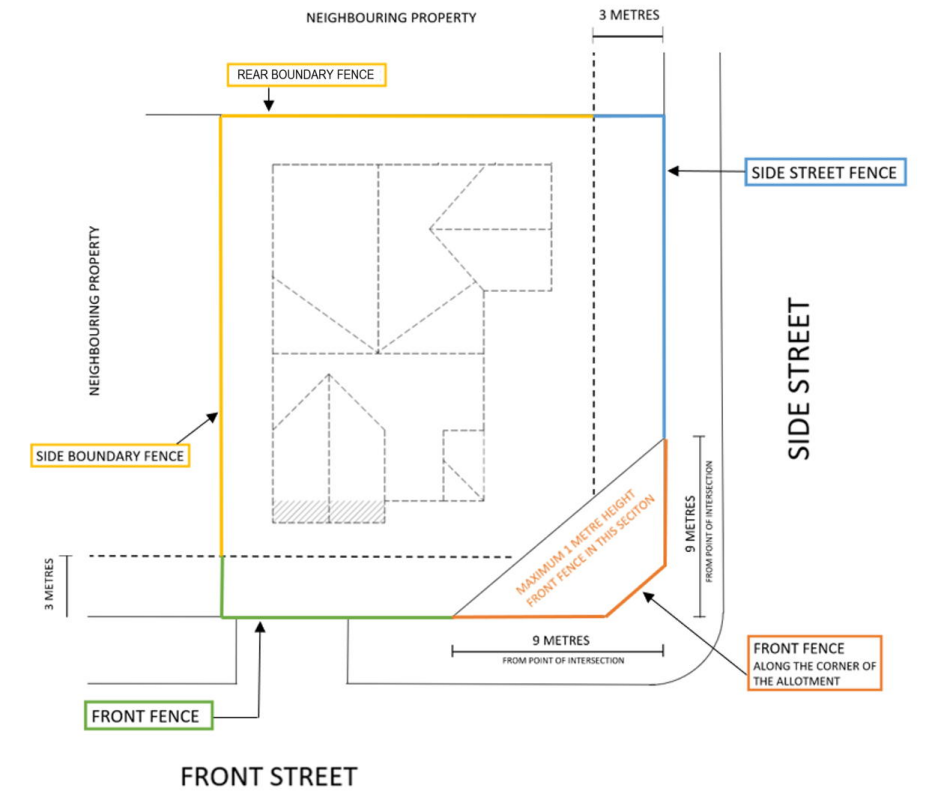Fences – height rules
Key points
If you’re repairing and replacing an existing fence ‘like for like’ you won’t need a building permit or Council’s report and consent.
If you’re building a new fence or repairing or replacing an existing fence and making changes to it (eg. not ‘like for like’), you’ll need to know the rules about heights.
The type and height of fence you can build around your property depends on the road it faces and if it is a front, side, or rear fence. Some planning overlays and zones, and estate design guidelines can restrict the type of fence you can build.
Fence heights are always measured from the natural ground level.
Front fences
If your property is on a:
- Council (non-declared) road – your fence can be up to 1.5 metres high
- VicRoads (declared) road – your fence can be up to 1.8 metres high.
Go to VicRoads to check if your road is a non-declared or declared road
If your front fence is within 3 metres of the front title boundary and built using:
- wood, posts and wire (i.e. light-weight materials): it can be up to 1.5 metres high
- bricks, concrete, masonry (i.e. heavier materials): it can be up to 1.2 metres high
The above fences don’t need a building permit.
The first 3 metres of side fences extending back from the front fence must be no higher than these heights (see diagram below). You cannot extend fences above these heights by attaching screens.

Non-masonry side boundary fence elevation.
If the fence is on a retaining wall, its height is included in the fence’s overall height, if the retaining wall is built above the natural ground level. Fence heights are always measured from the natural ground level.
Side and rear fences
Neighbours share the cost of building a side and rear fence that can be up to 2 metres high. Where the fence is within 3 metres of the street alignment, it must not be higher than 1.5 metres.
You cannot extend fences above these heights by attaching screens.
If the fence is on a retaining wall, which is on natural ground level, its height is included in the fence’s overall height. Fence heights are always measured from the natural ground level.
Fences on corner blocks
On corner blocks, fences facing the main street can only be up to 1 metre high within 9 metres of where your corner fences meet (street intersection). Beyond this, it can be up to 1.5 metres (Council road) or 1.8 metres (VicRoads declared road).
The fence facing the side street can only be up to 1 metre high within 9 metres of where your corner fences meet (street intersection) and then it can be up to 2 metres.
If the fence is on a retaining wall, which is on natural ground level, its height is included in the fence’s overall 1-metre height. Fence heights are always measured from the natural ground level.

Building permits – when you need one
If you want to build a fence that’s higher than those outlined on this page above, before building starts you need to apply for:
You don’t need a building permit for a tennis court chain wire fence.
Property zones, overlays and fences
Some property zones and overlays restrict the type of fence you can build. Before you start building you need to find out if your property is subject to:
- Inundation Overlay (LSIO)
- Environmental Significance Overlay (ESO)
- Urban Growth Zone (UGZ).
To find out more about your property go to: VicPlan: maps and planning information
If your land is subject to any zones and overlays, contact our planning team on 1300 787 624 to talk about your fencing project.
You should also check your Certificate of Title for:
- Memorandum of Common Provisions
- Estate Design Guidelines for fencing restriction
- covenants restricting fencing.
If you want to build a fence that varies from the title restriction, you may need to seek written approval from the estate developer.
Contact us
To speak to someone in our Building team about your fencing project, contact us on 1300 787 624
